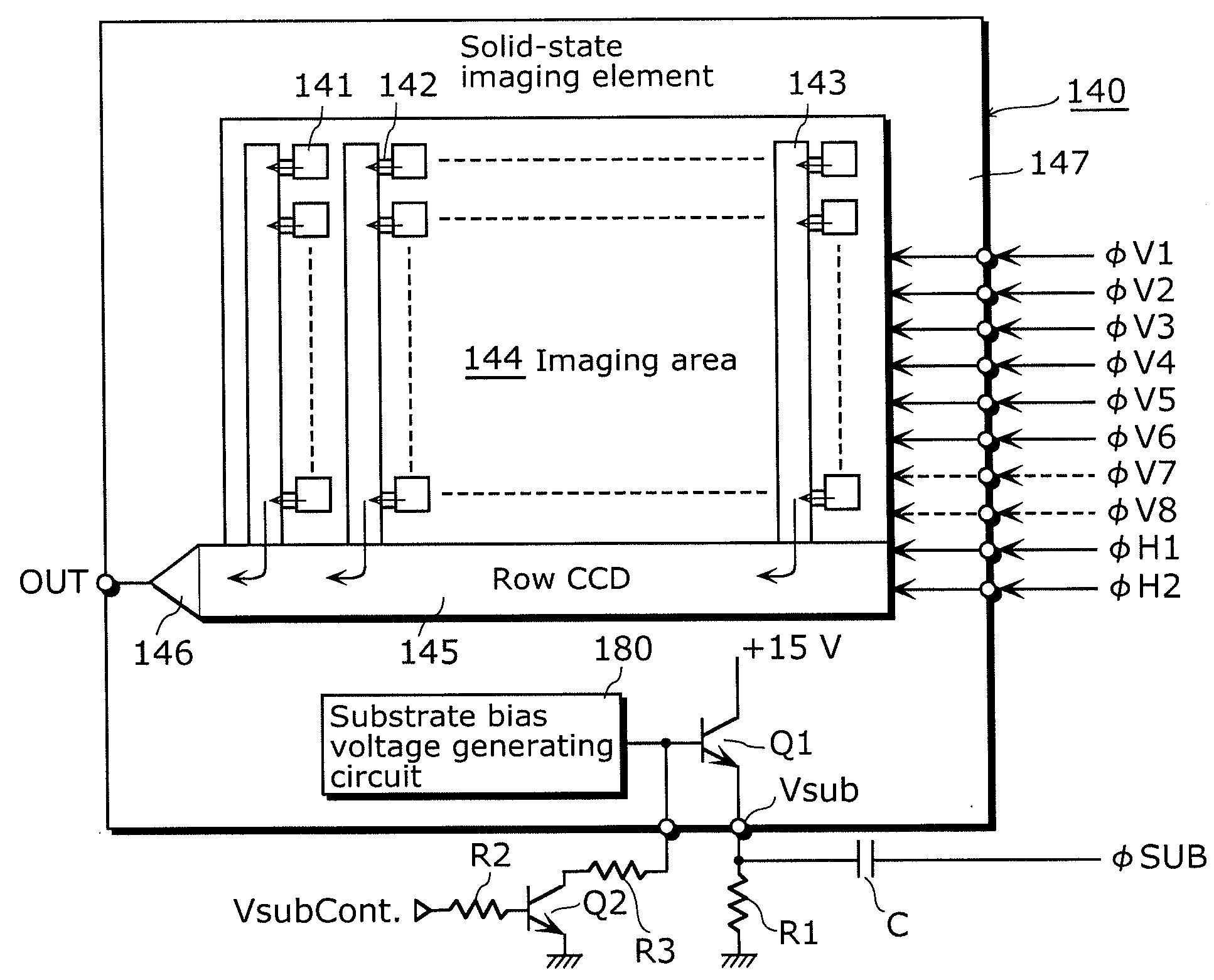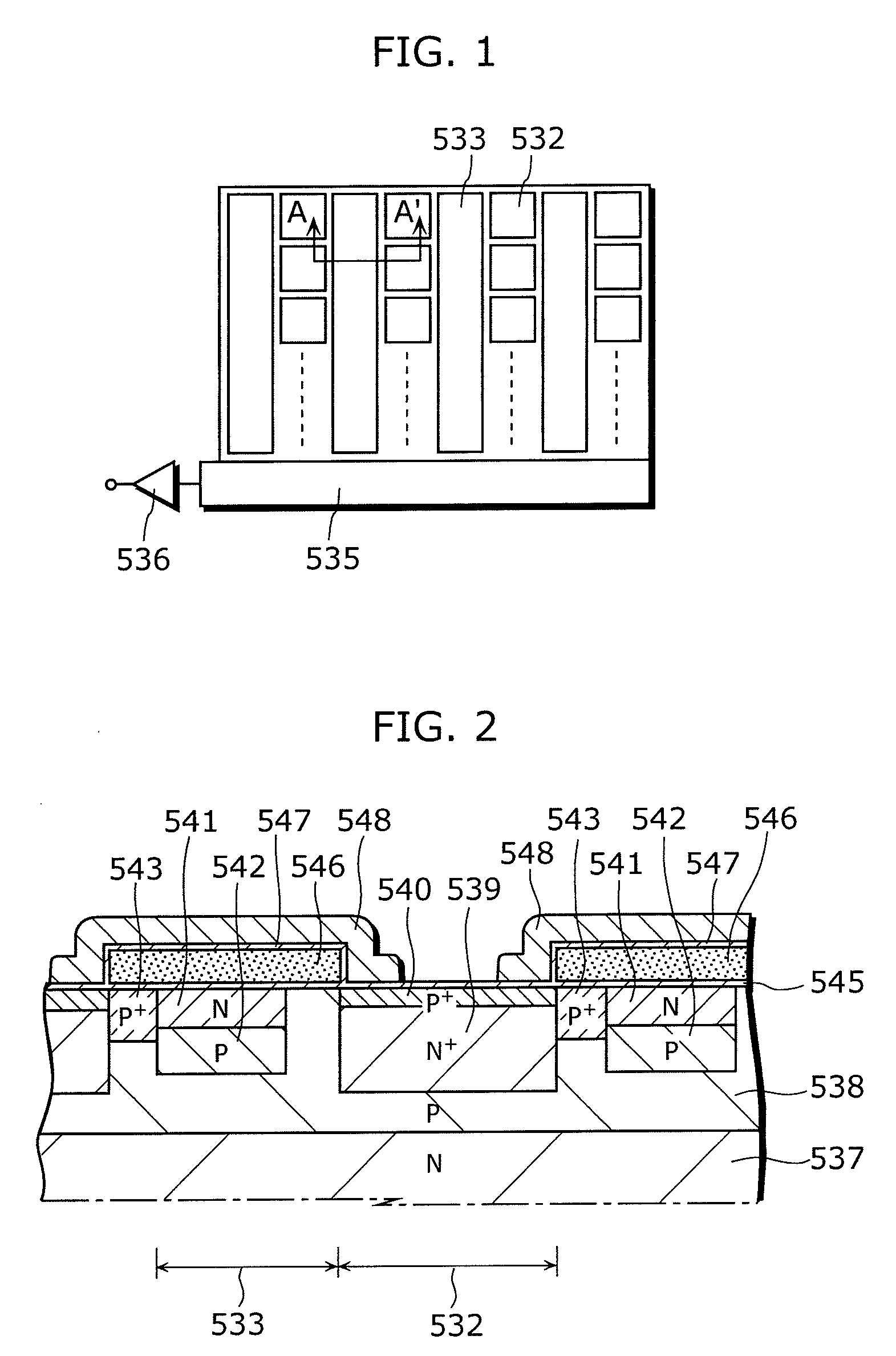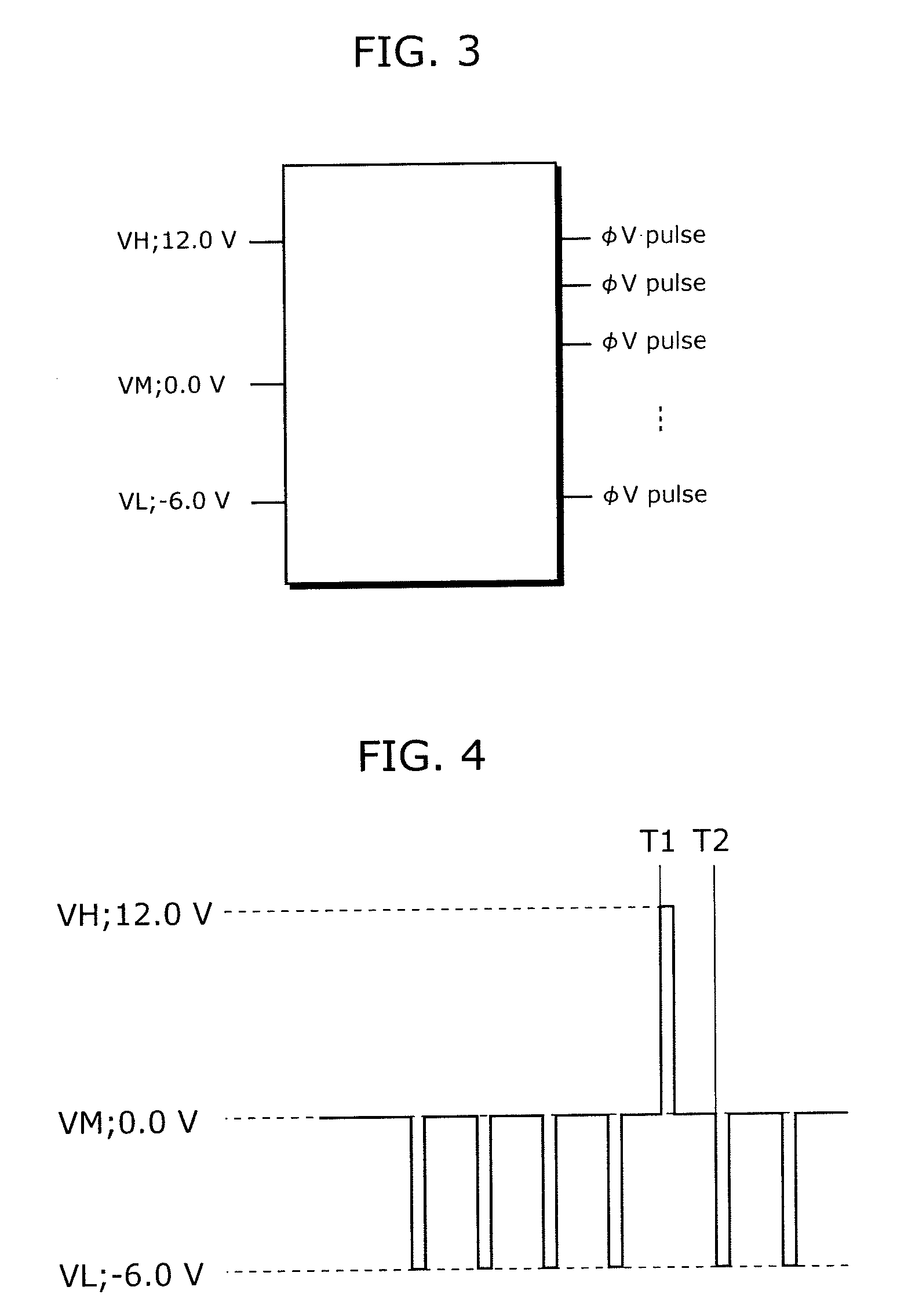Solid-state imaging device, driving method thereof, and camera
- Summary
- Abstract
- Description
- Claims
- Application Information
AI Technical Summary
Benefits of technology
Problems solved by technology
Method used
Image
Examples
first embodiment
[0096]FIG. 5 shows a structure of a camera (imaging device) using a solid-state imaging device in a first embodiment.
[0097]As shown in FIG. 5, a camera 101 includes: a lens 110 forming an optical image of an object on a solid-state imaging element; an optical system 120, such as a mechanical shutter and a mirror optically processing the optical images passing through the lens 110; a solid-state imaging device 130 in the present invention; a signal processing unit 160; and a digital signal processor (referred also to as “DSP”, hereinafter) 170.
[0098]The solid-state imaging device 130 includes a solid-state imaging element 140 and a driving pulse controlling unit 150.
[0099]The solid-state imaging element 140, such as an CCD image sensor, generates a pixel signal in accordance with an amount of received light.
[0100]Following a direction from the DSP 170, the driving pulse controlling unit 150 controls the solid-state imaging element 140 by generating various driving pulses at various s...
second embodiment
[0137]FIG. 12 shows a structure of a camera (imaging apparatus) 201 in a second embodiment.
[0138]The camera 201 in the embodiment is different from the camera 101 in the first embodiment in that the camera 201 includes a driving pulse controlling unit 250 which has a different structure from the driving pulse controlling unit 150 in the first embodiment. The driving pulse controlling unit 250 includes a driving pulse generating unit 252 and a pulse shifting unit 253. The pulse shifting unit 253 has a circuit part which is shared with the solid-state imaging element 140.
[0139]FIGS. 13A and 13B illustrate a structure of the driving pulse controlling unit 250. It is noted that FIG. 13B only shows a structure to generate a column transfer clock φV1 in FIG. 13A. This structure is similar to a structure to generate column transfer clocks φV2 to φV6.
[0140]The driving pulse controlling unit 250 has no −1 V power supply, and thus has a similar structure to a power source of the driving pulse...
third embodiment
[0155]FIG. 17 is a cross-sectional view of a solid-state imaging element 340 in a third embodiment. In particular, FIG. 17 is a cross-sectional view showing a structure of the photodiode 341 and the column CCD 143 in a substrate in-depth direction.
[0156]The solid-state imaging element 340 in the embodiment is different from the solid-state imaging element 140 in the first embodiment in that the solid-state imaging element 340 includes a photodiode 341 having a different cross-sectional structure from that of the photodiode 141 in the first embodiment. The photodiodes 341 is structured to have the signal charge accumulating region 192 and a hole storage region 393. The signal charge accumulating region 192 and the hole storage region 393 are located beside the charge transfer region 195. A side portion, of the hole storage region 393, facing to the charge transfer region 195 recedes in a direction away from the charge transfer region 195 with respect to a side portion, of the signal ...
PUM
 Login to View More
Login to View More Abstract
Description
Claims
Application Information
 Login to View More
Login to View More - R&D
- Intellectual Property
- Life Sciences
- Materials
- Tech Scout
- Unparalleled Data Quality
- Higher Quality Content
- 60% Fewer Hallucinations
Browse by: Latest US Patents, China's latest patents, Technical Efficacy Thesaurus, Application Domain, Technology Topic, Popular Technical Reports.
© 2025 PatSnap. All rights reserved.Legal|Privacy policy|Modern Slavery Act Transparency Statement|Sitemap|About US| Contact US: help@patsnap.com



